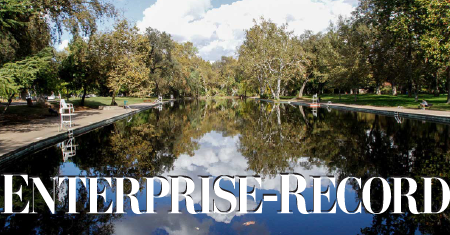
CHICO — Organizers of the referendum against the Valley’s Edge Specific Plan had a good feeling about their effort after collecting thousands of signatures to challenge the city’s approval. But after a hard-fought campaign over the better part of a year, they weren’t sure exactly where they stood until election night March 5.
Optimism turned to celebration when early results indicated landslides on both Measure O and Measure P. As of the latest update, March 14, as the Butte County Elections Office finalizes the tally, each measure drew 62% opposition to Valley’s Edge versus 37% in favor.
“We were surprised — at least I was personally,” Eric Nilsson, a member of Smart Growth Advocates and the Butte Environmental Council, said Friday. Those and other organizations coalesced under the banner Stop Valley’s Edge (previously Valley’s Edge Resistance).

“As a group, we felt like we had a good chance of defeating the development,” he continued, “but we had no idea it would be a 2-to-1 margin, particularly when along the way we were outspent 10 to 1. That spending was shocking, but our approach was to educate, talk to people one on one, to do all those grassroots kind of things to be effective.”
The project proponents declined to comment until the vote gets certified within the next two weeks. Opponents already have started sharing their views on the property’s future.
Valley’s Edge is a 1,448-acre parcel on the southeast boundary of Chico, separated by a bike path from the Stonegate development approved along Bruce Road. The ownership group, namely Bill Brouhard, spent more than a decade developing the plan that would have added 2,777 housing units while keeping roughly half the acreage as parkland and open space. The City Council approved the proposal and variances from the general plan it would necessitate last January.
Stop Valley’s Edge put forth a list of concerns including fire risk, water, traffic and species conservation. Parallel to the referendum, coalition members filed suit to block the specific plan, and that litigation remains active at least until a case management conference May 15. Measures O and P overturned approval of the plan, but the litigants also seek to nullify the environmental impact report the council also approved.
Looking forward
Grace Marvin, conservation chair of the local Sierra Club chapter, expressed a prevailing view among opponents that “we want to protect that land as much as possible and not develop on it, but we’d be more than willing to talk about developing other areas of town.” Nilsson shared the same preference while noting the coalition is “looking at and open to alternatives, from 100% preservation of the land to some sort of combination of development and preservation of the land, depending on what that development might look like.”
Other allies have variations on the theme. Public interest attorney Marty Dunlap expressed that “the concept of Valley’s Edge as a community does seem to be offering some benefit, but not necessarily at that location — probably not at that location.” Jared Geiser, executive director of the local Audubon Society, said his conversations revealed “some people see high-density development on the city side of it, on the western side, and conserve the ridgeline. Me personally, I don’t want to see development out there … more sprawl in the foothills.”
Nilsson said opponents have engaged with public and private entities on the prospect of funding acquisition of the property for conservation as open space. Potential partners include the California Wildlife Conservation Board and the Northern California Regional Land Trust.
“We’d love to sit down with the landowners and see what’s possible,” he said. “Those are the next steps we’re looking at.”
Bandied in campaign messaging as the alternative to the Valley’s Edge Specific Plan, the owners could develop the site that currently sits in county jurisdiction under county standards. The property is zoned for 20-acre ranchettes. Geiser said he spoke with a county planner who confirmed such a project would require a parcel map that would need an environmental assessment and public review before approval.
Whether the litigants — Chico-based AquAlliance, the Sierra Club and the Center for Biological Diversity — successfully negotiate a rescission of the current EIR, Geiser explained that any substantive revision to the plan would trigger a new evaluation of environmental impacts.
“The process going forward after the referendum is not as cut and dry as any of us wish it here,” he added. “But I think history and examples around the state of California show that when people organize successful referendums against development, it is very rare for that development to come back in the same form.”



